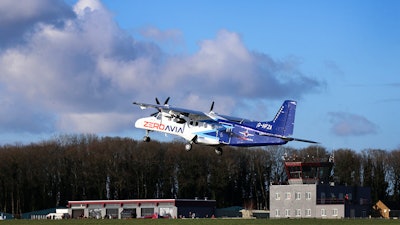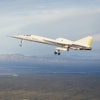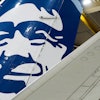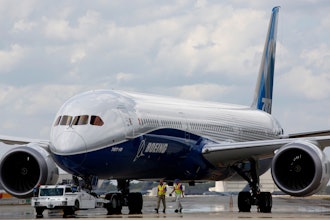
Zero-emission flight took a giant step forward today with ZeroAvia flying the largest aircraft in the world to be powered by a hydrogen-electric engine. The company specializing in zero-emission aviation took to the skies for the maiden flight of its 19-seat Dornier 228 testbed aircraft, retrofitted with a full-size prototype hydrogen-electric powertrain on the left wing of the aircraft.
The flight took place from the company's R&D facility at Cotswold Airport in Gloucestershire, UK, and lasted 10 minutes. At 13.35 pm GMT this afternoon the aircraft completed taxi, take-off, a full pattern circuit, and landing. The landmark flight forms part of the HyFlyer II project, a major R&D program backed by the UK Government's flagship ATI Program, which targets development of a 600kW powertrain to support 9-19 seat aircraft worldwide with zero-emission flight.
The twin-engine aircraft was retrofitted to incorporate ZeroAvia's hydrogen-electric engine on its left wing, which then operated alongside a single Honeywell TPE-331 stock engine on the right. In this testing configuration, the hydrogen-electric powertrain comprises two fuel cell stacks, with lithium-ion battery packs providing peak power support during take-off and adding additional redundancy for safe testing. In this testbed configuration, hydrogen tanks and fuel cell power generation systems were housed inside the cabin. In a commercial configuration, external storage would be used and the seats restored.
All systems performed as expected. This is the largest ZeroAvia engine tested to date, and places the company on the direct path to a certifiable configuration to be finalized and submitted for certification in 2023, with this program also serving as key to unlocking speedy technology development for larger aircraft. ZeroAvia's 2-5 MW powertrain program, already underway, will scale the clean engine technology for up to 90-seat aircraft, with further expansion into narrowbody aircraft demonstrators over the next decade.
Of note, this flight test campaign is being conducted under a full Part 21 flight permit with the UK CAA, which is a much more stringent set of requirements compared to the E-Conditions framework ZeroAvia used for its 6-seat prototype test flights in the prior years. This signifies the maturity of the company's processes and design approaches and its readiness to proceed towards full commercial certification of its powerplants.
ZeroAvia will now work towards its certifiable configuration in order to deliver commercial routes using the technology by 2025. The Dornier 228 will conduct a series of test flights from Kemble and later demonstration flights from other airports. Almost exactly two years ago, ZeroAvia conducted the first of more than 30 flights of a six-seat Piper Malibu aircraft using a 250kW hydrogen-electric powertrain.






















